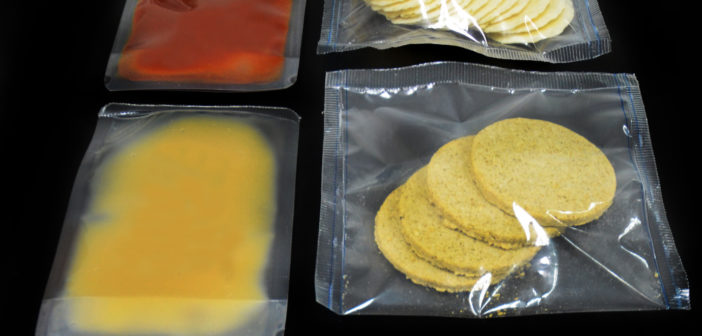Plastic packaging continues to innovate and contribute to the improvement of our daily lives. The Singapore organization A*STAR has created a plastic film that can extend the life of food and thus limit food waste. It is also able to signal when food is going bad so as to prevent food poisoning.
The project
Some may raise a logical objection: this is not a biodegradable packaging. But theAdvanced Polymer Composites Food Packaging – this is the technical name of the device–makes a fundamental contribution to the environment by extending the shelf life of the food it wraps. This is possible thanks to a system for absorbing gases that accelerate the decomposition of food. On the other hand, it is the gaseous emissions themselves that color the packaging, signaling when the food is no longer edible.
The team
Leading the research team that created the revolutionary plastic casing is Dr. Li Xudellof the Institute of Materials Research and Engineering (IMRE). Dr. Xu collaborated on the project with A*Star, Singapore’s national research and development agency. This technology came to market in 2012 through the Industrial Coating and Packaging Consortium. However, the Consortium is still working to refine the device.
The characteristics of color-changing packaging
First, the packging created by Xu’s team is thought of as a high barrier that keeps out oxygen, moisture and ultraviolet rays. These substances in fact accelerate the decomposition of food. Also called inert packaging, this new type of plastic protects food in a more heartfelt way. The rate of oxygen passing through the package is less than one-fourth that of plastic films currently on the market.
The research team dubbed this type of packaging as “active.” It is all thanks to the components that are part of the plastic material and that absorb oxygen, moisture, ethylene and organic substances produced by fruits and vegetables that accelerate their decomposition.
Finally, Advanced Polymer Composites Food Packaging was defined by the working group as “smart.” In fact, this packaging can tell the consumer if the food inside is edible, if the integrity of the package has been damaged, or if the food preservation and storage system has been compromised. This is all done through colors. “It’s like when you take ice cream out of the refrigerator and put it back inside after a while. Maybe no one knows, but the taste and texture of the ice cream has changed.”
Dr. Li Xu predicts that high-barrier packaging may begin to be used on a large scale starting next year, although the “smart” version (the one that will tell us whether or not to eat the food it contains) will still require five years of work.
A contribution against food waste
About product biodegradability, Li confirms that the team is also working on this aspect: “Maybe we won’t be able to influence climate change, but in our opinion by focusing on food packaging, we can improve the shelf life of food and preserve its freshness, reducefood waste. That is our social responsibility.”
It is estimated that the flexible plastic packaging market will grow to be worth about $351 billion by 2018. Leading the department is the Asia-Pacific region, with consumption recorded there accounting for 44 percent of the world’s share. According to the FAO, about 1.3 billion tons of food is wasted each year. In 2015 alone, Singapore generated 785,500 of them.
The environmental savings produced by plastics
A study conducted by Trucost for theAmerican Chemistry Council shows that the environmental cost of using plastics for goods and packaging is about four times lower than that of alternative materials. If we replaced packaging made of plastic with traditional elements such as glass or aluminum, this would raise environmental costs from 139 billion to 533 billion. These figures take into account marine litter and damage to the ocean ecosystem, transportation and production, and the cost of raw materials and energy. Considering the issue of food waste according to the study for every 1 percent of meat packaged in advanced plastic packaging compared to traditional packaging, about $2.2 million is saved. That’s why packaging such as that created by A*Star, although still not recyclable, can improve our lives and that of our planet.
Taken from www.green.it



